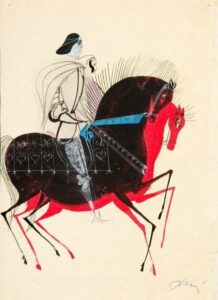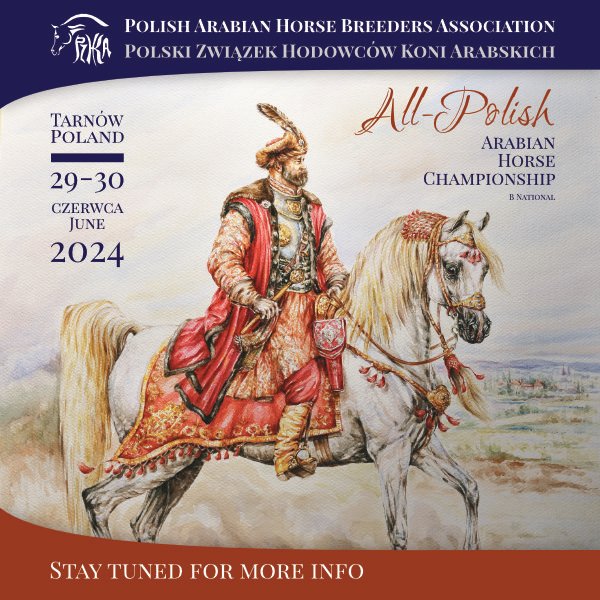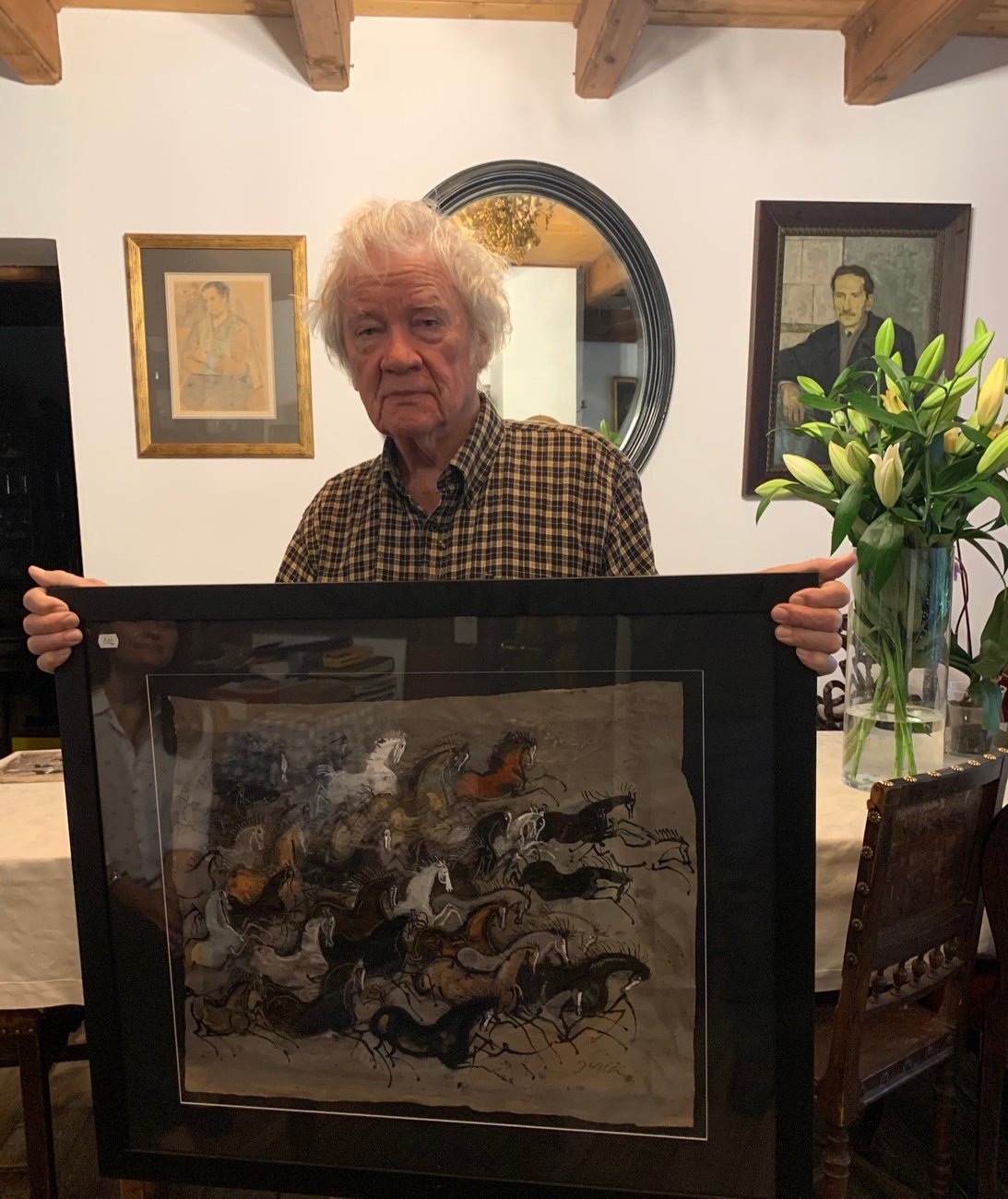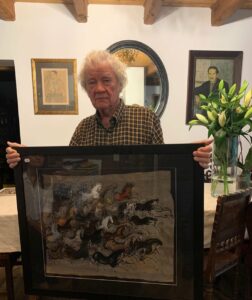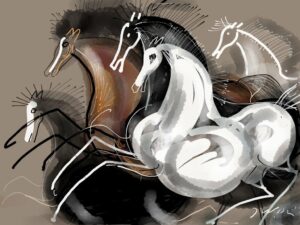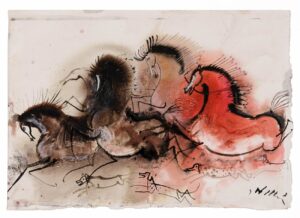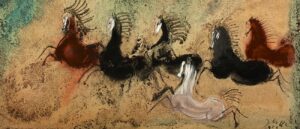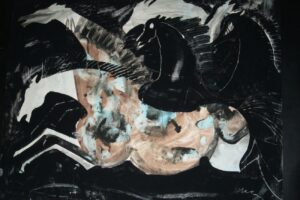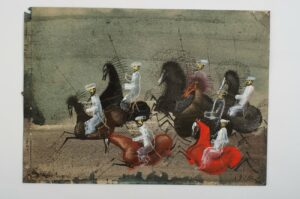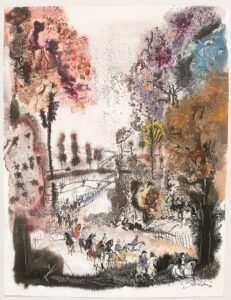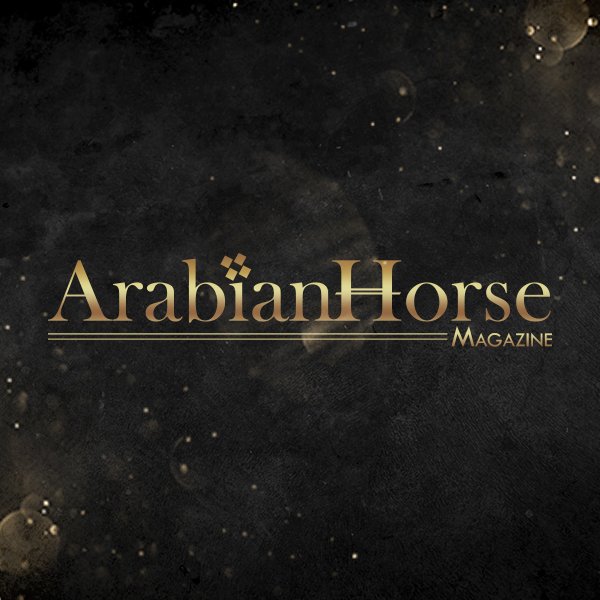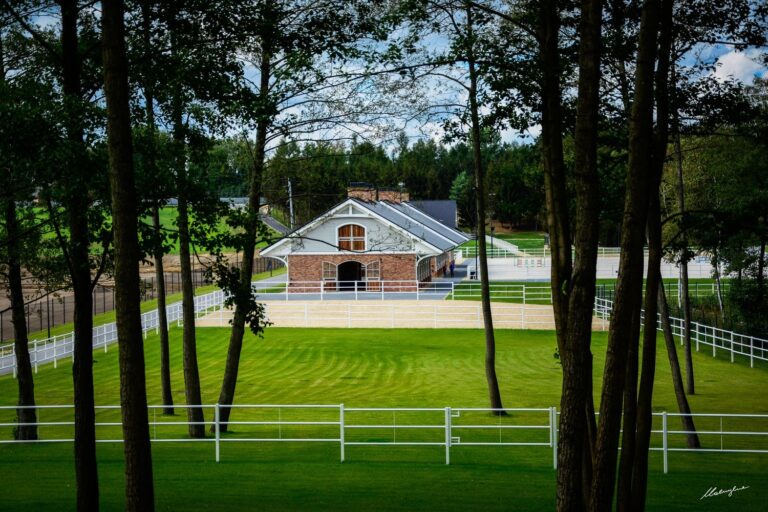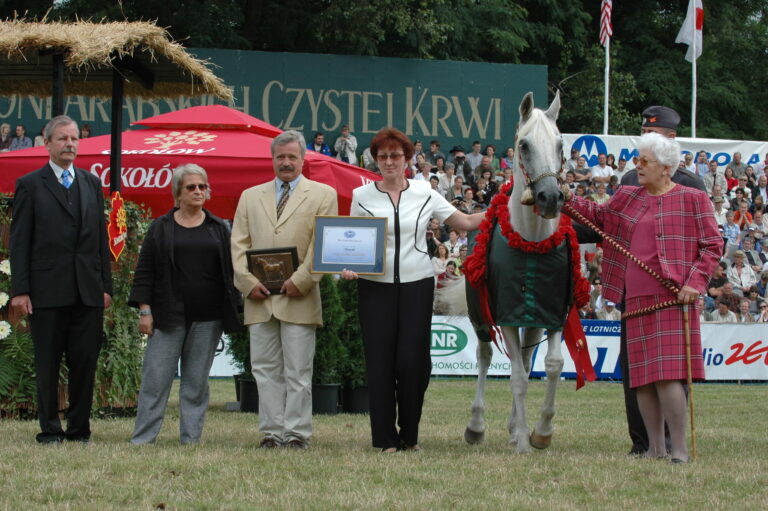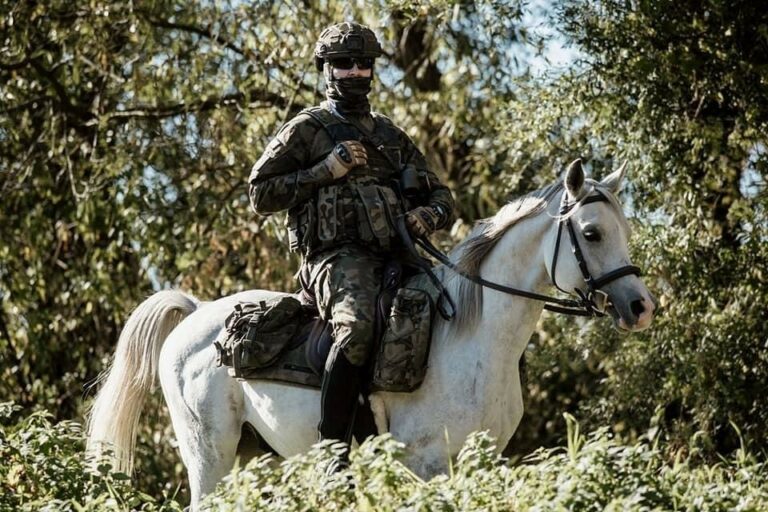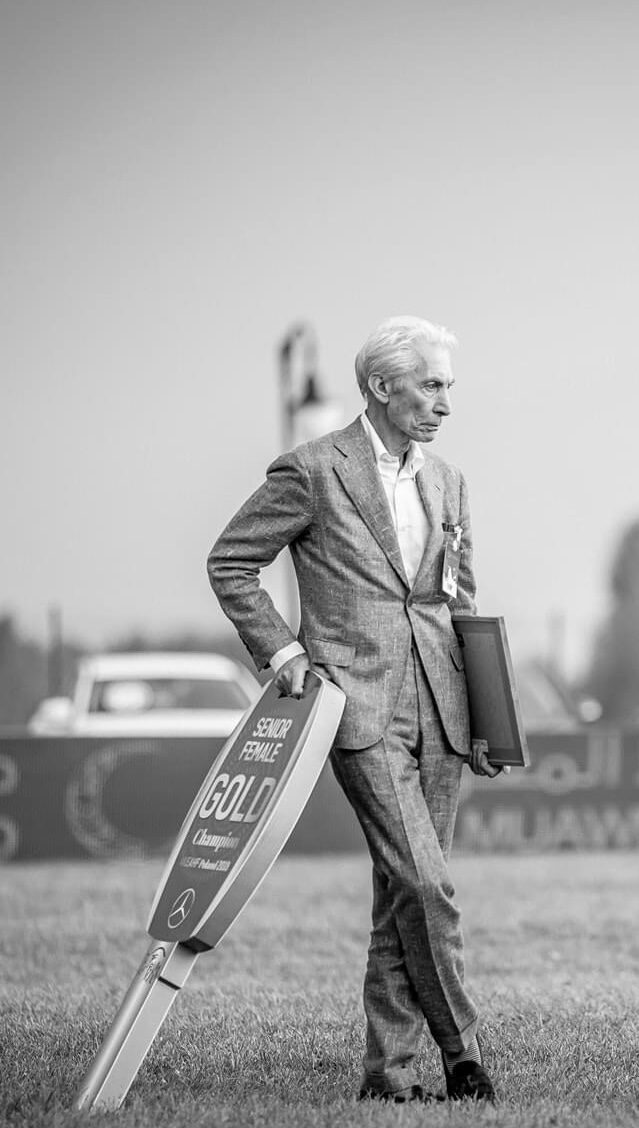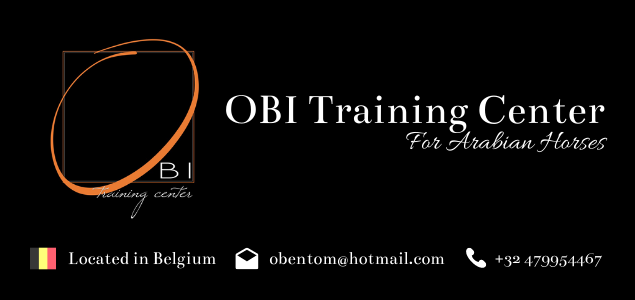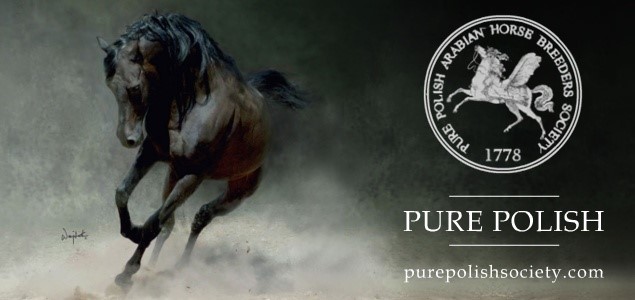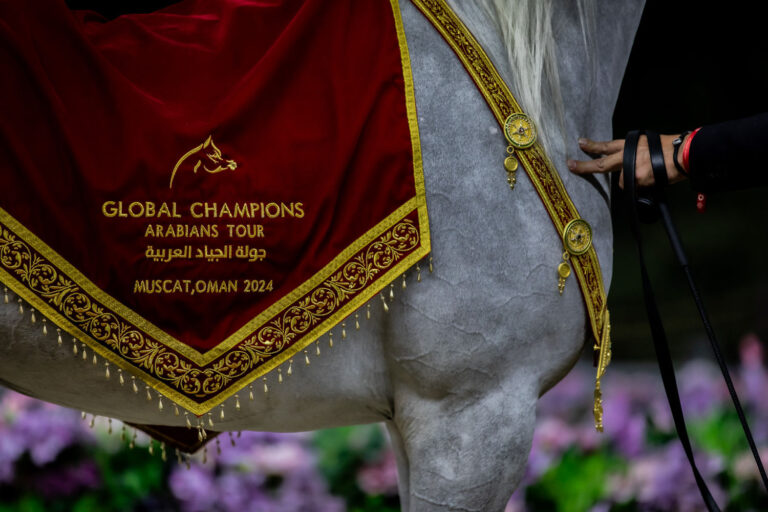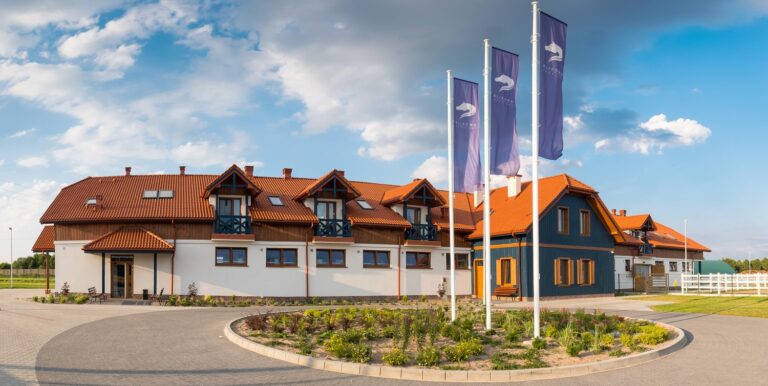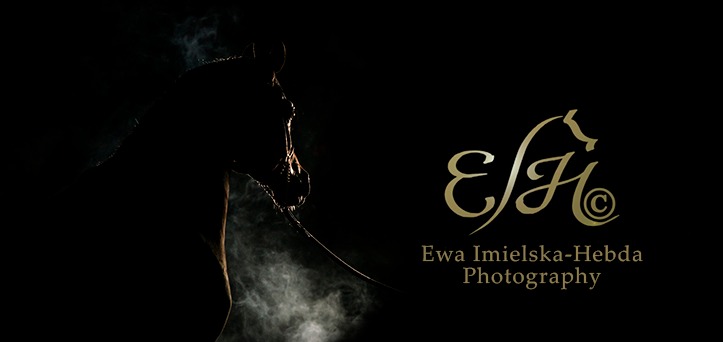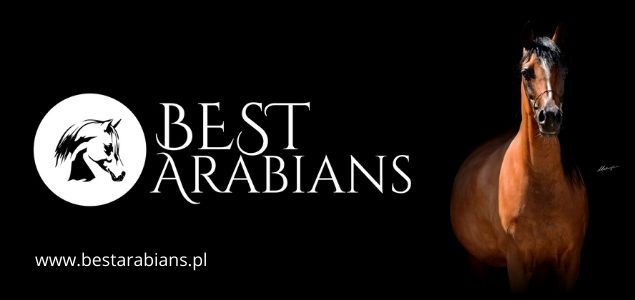“You can immediately see that these are Wilkoń’s things, the movement of the brush, the shape of the stain, the technique of combining the brush with a pen, crayon, pencil… “ – that’s what the artist himself said about his characteristic style in Agata Napiórska’s book “Szczęśliwe przypadki Józefa Wilkonia“ (“Lucky Fortunes of Józef Wilkoń“), published by Marginesy, 2018. JÓZEF WILKOŃ, born in 1930, this outstanding painter, sculptor, illustrator, graduate of the Academy of Fine Arts in Cracow, currently lives and works in Zalesie Dolne near Warsaw. The main source of inspiration for him are animals, including horses, also Arabians, which he admires in a unique way. “I like to paint horses the most because they are beautiful, especially the Arabian horse. And a herd of Arabian horses is the pinnacle of beauty“, he confided to the author of the book. Indeed, Wilkoń’s Arabians are unmistakable and have everything that captivates fans of this breed: an arched neck, a raised tail when moving, a small, graceful head with a large, dark eye and dynamic movement rendered with a few strokes of the brush. There is no way to confuse the Wilkoń Arabians with the images of horses that came from the hands of other painters.
Horses were present in his life from his earliest childhood, spent in the village of Bogucice near Wieliczka. “When I was young, I was famous for being put on a horse, the horse would trot, and after a dozen or so meters I felt that I was irreversibly shifting to the right, left and bang, I was falling“ – he told polskiearaby.com. Already in elementary school, Józef showed his drawing abilities, although, as he claimed, “Kossak he was not“: “Juliusz Kossak, when he was twelve, made such horse drawings that the old Kossak would not have been ashamed“, he noted in the interview with Napiórska. The passion for the realism of Kossak, Matejko and Wyczółkowski came from Wilkoń’s family traditions.
He spent holidays with his grandparents in Łańcut, where there was a real zoo, of course with horses as the main characters. His grandfather, Wilkoń recalled, was Potocki’s coachman. Young Józef got acquainted with field work early. He could harness a horse and drive himself. He also learned to plow on his own, with one horse, and he was only thirteen! Agricultural work, as he admitted, is familiar to him to this day.
From Łańcut it was close to Albigowa. This is where Wilkoń came into contact with Arabians. He told polskiearaby.com: “We once went by wagon to Albigowa and an unpleasant accident happened along the way. Our mare, Baśka, got tangled in the harness and reins. She fell. And I, a young boy, had to save her. I managed. But I don’t remember why we were going to Albigowa. However, it was there that I saw Arabians for the first time, including Bandola, which stood out among others. Years later, I saw her in Janów, at Andrzej Krzyształowicz’s stud, who showed her to me. She was as great as before. He let all the horses out on the paddock, and as they ran, I understood for the first time what it was all about. “

An Arabian in trot, an Arabian mare with a foal by her side – this stimulates the imagination of every person sensitive to beauty, let alone an artist. “The animal has consciousness, a sense of beauty, the beauty of movement, “ Wilkoń told us. “The joy with which a foal runs is what an adult horse has when moving, and there is also the will to play. What a foal does is the poetry of movement combined with the joy of life. A running Arabian is a theatre, he must feel that he is beautiful and demonstrates this beauty. “
Bandola was deeply remembered by the artist. “She lived a long life and produced foals until late. I became interested in what happened later, I watched the auction successes of her children“, he admitted. What part of Bandola is present in his Arabians? Dashing and at the same time subtle, full of grace? “In today’s works, and I returned to the topic of horses, for a few seconds you can see the movement of the brush, which then curls up. One twist of the brush creates the form of a horse. Then only the head and legs are added. How? With the same brush. I turn it upside down and use the wooden grip. And the legs are formed. The wooden grip of the brush can also be used for drawing. And these legs are not distorted, they are really so delicate and subtle. Already the Greeks put horses with such legs on vases, and it was from them that I took this concept. But in my case they are even more absurd. “
He commented his dynamic line in Napiórska’s book: “The movement must be precise like a surgeon’s. For a long time I have been captivated by works of a decisive form, resulting from dynamic hand movements. “
Horses appeared in Wilkoń’s illustrations to “Pan Tadeusz“. In 1962, a contest was announced, in which many outstanding artists took part, including Zamecznik, Młodożeniec, Tomaszewski. Wilkoń won. “My «Pan Tadeusz» was quite shocking for those times – he recalled in the book – it consisted of watering-down the landscape, painting ephemeral, impressionistic and poetic scenes“. He told us that after winning the contest, in an interview with Adam Mauersberger, the then director of the Adam Mickiewicz Museum, he raised the subject of horses. “I asked if he didn’t mind that my horses have legs like spiders, something between an insect and a horse. He acknowledged, that that’s just the way it is. “
Arabian or oriental horses also appeared on the covers of Wilkoń’s children books: “Beowulf“ (1966) and Natalia Gałczyńska’s “Iv and Finetta“ (1962). The latter is one of the illustrations the artist is most pleased with. “The Arabian has an extremely compact, strong body and these unique limbs, “ he emphasized. Oriental horses are also a theme from “Ali Baba’s Treasure“ (2014). Nowadays, we have had a chance to come across Arabians from Wilkoń in public space – an open-air exhibition of his works was presented in the summer of 2015 at the market square in Piaseczno. Between July and September 2020, Wilkoń’s illustrations and sculptures were exhibited at the City Museum in Tychy – this is the latest of numerous presentations of the artist’s output.
